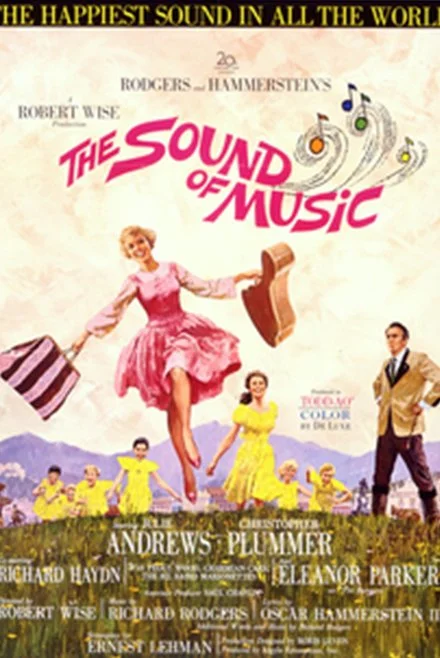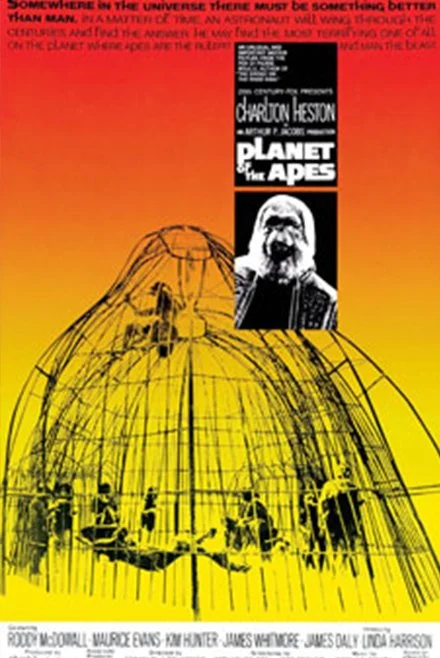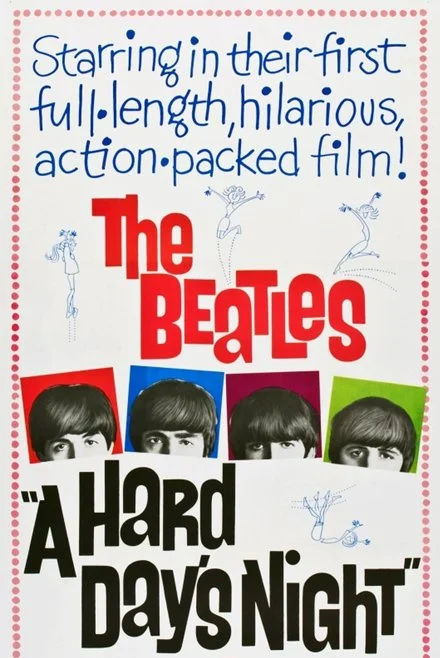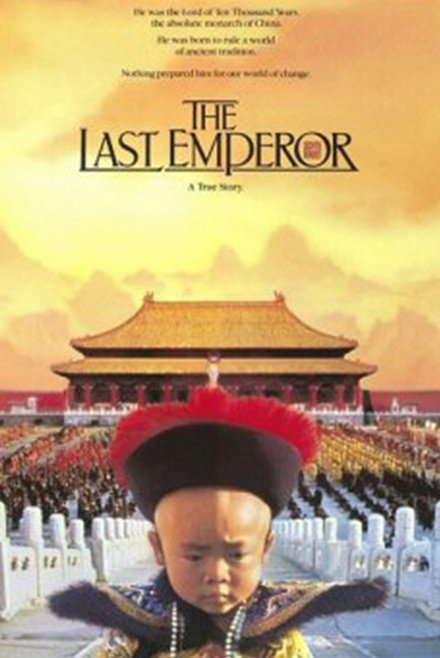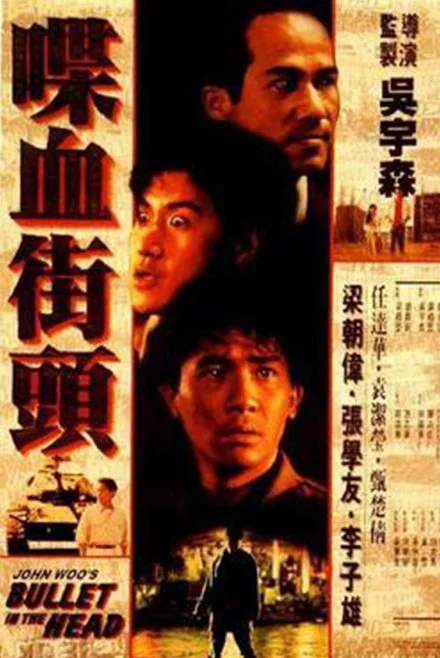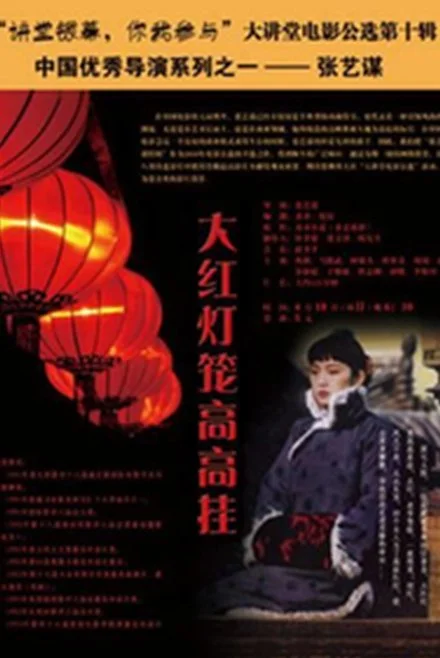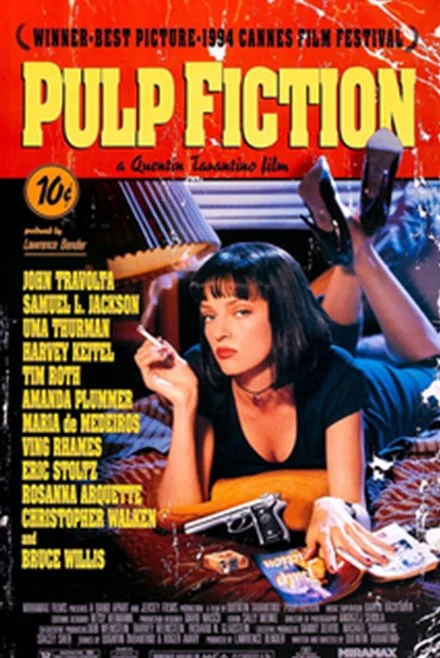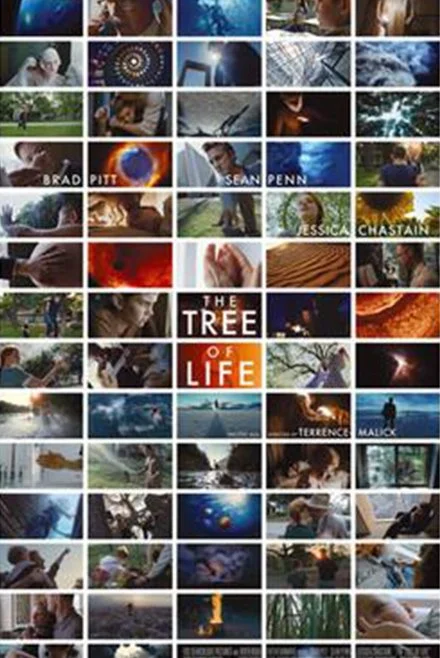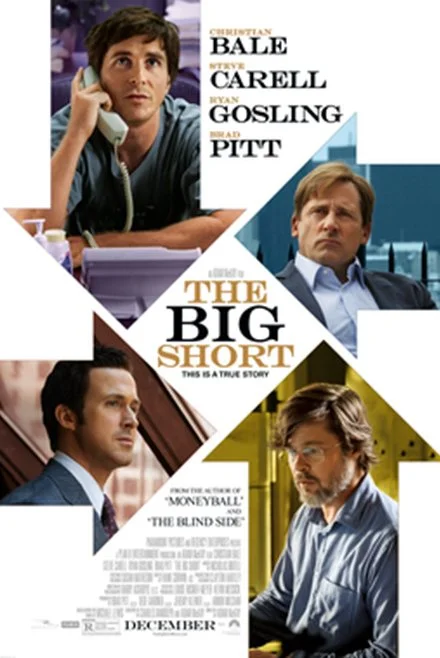Movies of my Life
Occasionally in conversation, I reveal myself to be a film buff. Inevitably, someone asks, “What’s your favorite movie?” And while I usually manage a long, slow, “uhhh….,” I never end up coming up with one. But in the process of reviewing the vast rolodex of my film-viewing life (probably what will flash before my eyes in that infinite final moment), I do come up with several that at least for a time would earn the title of My Favorite Film. Some of us are well-read (it’s very well-known), but I have only a passing familiarity with much of the great literature. On the other hand, I’ve seen and read about ALL the great works of film history. And a whole bunch of not-so-great works as well, almost in equal measure to my pop music fixation.
As with so many encounters with art and culture, what was the bees’ knees for 12-year-old me no longer holds sway over 59-year-old me, though at any given moment in time, one film or another really, REALLY resonates with my world. And I proudly retain ownership of that resonance even if the luster has worn off the movie. So, here’s a look at my life and the films that helped to shape it.
The Sound of Music (1965)
This was a big one for me as a musician, responsible in many ways for the career that followed. My two-year-old self took absolutely no notice of this one when it was first released. But its popularity was so strong (and in the era of very limited television offerings and no such thing as a VCR, let alone streaming) that it was re-released in 1967. This time, 3-and-a-half-year-old me was taken to see the film with a marshmallow history that went right over my head, but for whom those earworm songs lodged firmly in my brain (I bet one’s in your head as you read…). Cut to the next day when a precocious, bored toddler was discovered standing below the piano keyboard reaching over his head to pluck out the melody to “Do-Re-Mi” (and yes, the subdominant substitution was beyond not only my grasp but my reach – the black keys just beyond my fingertips). A piano teacher was called, lessons were undertaken, and just as quickly abandoned and forgotten. But the seed, though dormant, was planted.
And I still have a soft spot for the movie.
The Planet of the Apes (1968)
This one had to wait until television, probably early 70s. But I do recall seeing something about the make-up effects early on, perhaps on the Oscars telecast. But its depiction of a parallel world, alien yet familiar captivated my imagination. I pretended I was Charlton Heston attempting his escape from Ape City on the playground jungle gym. I walked around trying to imitate Roddy MacDowell’s shuffling gait. And there were probably some vague stirrings of lust for Nova. And let’s be honest, for Kim Darby’s benevolent Zira as well. And that ending really shot a lightning bolt through my 9-year-old mind. I also discovered the original novel in a bookstore and for many years found myself reading all sorts of novelizations of Planet of the Apes and Star Trek episodes – a convergence of film and literature of a sort…
A Hard Day’s Night (1964)
Definitely on local television, mid-70s just as my Beatle obsession really took hold. There they were – running around, speaking in a foreign tongue, totally in command of the lunatic world around them. Seeing it these days, there’s so much to recommend in Richard Lester’s ability to capture their magnetism and energy, to not talk down to the audience or mock the band itself. Still an excellent movie in its own right. But for someone taken in by the Beatles magic in the years when there was no Beatles, the movie brought to life something that had previously existed only as still images in an ever-growing record collection. The Criterion restoration has even rendered the dialog mostly audible. And when necessary, one can resort to subtitles…
Close Encounters of the Third Kind (1977)
Like every other teenage male on the planet, I must have seen Star Wars a dozen times in the summer of 1977. I still remember seeing the trailer for it just before the Gene Wilder/Richard Pryor vehicle, Silver Streak. That was a movie I HAD to see. But as visually exciting as it was, it was also JUST PLAIN DUMB. However, just a few months later came the thinking-teen’s science fiction film, Spielberg’s tale of familial dysfunction, Dreyfuss on the verge of a nervous breakdown, Truffaut (my introduction) making odd hand gestures, and that John Williams theme – WAY more integrated into the narrative than the proto-fascist Star Wars march. Seeing it more recently, the breakdown of the family feels heartbreakingly sad, but at the time I was captivated by the Devil’s Tower formation and those oddly child-like aliens. (Of course, I went to the re-release with the added footage INSIDE the spaceship – what a rip-off!).
2001 (1968)
Just in time, the 10th anniversary re-release brought this to a big screen for me and my teenage friends to see. I still recall waiting for the bus downtown while we tried to parse the meaning of the last two reels of the film. We knew it was an important movie. But I was unprepared for Kubrick, unprepared for what a film could be. Daunted. Stupefied. This was beyond anything else I had ever seen, and it took many years and many viewings to accept that there was no “meaning” that I had missed. Watching it recently, I noticed how SLOW it is. I also note that while the visuals (deservedly) got all the attention, it’s the sound that makes the movie, especially the long revenge killing of HAL with the silence of the vacuum of space broken by astronaut Dave’s respirator (sorry Darth) and that mournful rendition of “Daisy” as HAL ceases to exist.
Being There (1979)
Peter Sellers is masterful as Chauncey Gardner. But the lure of the film for me was that it was shot in my hometown. Our local newsman Hoyt Harris was given a small speaking role (“Riff, secret service”) and the Biltmore House looked far more interesting on the big screen than it did in real life after five or six school field trips. AND it still holds a soft spot for immortalizing for just a few seconds the local burger joint King of the Road where I imbibed tons of fat, sugar, and carbs after high school play practice. It was torn down years ago and replaced with a “designed” McDonald’s. Yuk.
Don’t miss the outtakes Ashby included during the credit sequence. It’s a common practice nowadays, but I believe this was the first time a major Hollywood production would draw the curtain on the process of filmmaking. And watching Sellers try to get through his “You tell Raphael…” monolog without breaking up is a testament to the challenge of every scene he was in.
Reds (1981)
Last year of high school, affecting as much of an “adult” manner as I could muster. This epic ode (oddly not to Beatty’s ego, but to Keaton’s most fully realized work) to romance framed by history taught me a little something about both. I think it’s vastly under-rated, probably because of Beatty’s baggage, but his usual shaggy mutt persona works against the heroism of John Reed’s story and every other actor is at the top of their game. The epic scale is impressive, but so is the attention to detail, to underplaying against such a massive backdrop. And while Hollywood has frequently been accused of leftist politics, it still shocking to me that Beatty was able to secure the funding to put together a mainstream film that dives into various interpretations of Marxist dogma, reminding the viewers that the US in the early 20th century was almost as ripe for revolution as Russia.
The Last Picture Show (1971)
Finally, I arrive in Boston, where there were several serious repertory movie theaters running wonderfully curated festivals and double-features, enough to fill every weekend and then some. I often caught two double bills a day, even occasionally cramming in a fifth movie. My first encounter with this movie was on just such a day. The same day that I first watched Mean Streets, Taxi Driver, Performance, and Gimme Shelter, The Last Picture Show was being screened in my dorm when I got home. Pretty momentous line-up, but it was Picture Show that hit me hardest. Something about the Hank Williams and Carl Smith recordings and especially Cloris Leachman still leaves me churned up inside. America as a foreign country, caught in a time warp.
Diva (1981)
This was the hip film playing in Boston when I arrived. Super stylish, but an especially welcome focus on music and control over one’s art at the core of a thriller. Like Jules, I fell in love with both Wilhelmenia Fernandez and the actress who played Alba, the enigmatic shoplifter (Crystal Silence, good choice!). Took me many years to realize that the skinhead villain with a polka fixation was Dominique Pinon, who showed up in several Caro et Jeunet films such as Delicatessen, and City of Lost Children).
Sherlock Jr. (1924)
One of the benefits of the metro rep theaters was the chance to fully immerse in complete retrospectives. The Brattle in Cambridge did me the favor of running all the Buster Keaton shorts and features from the 20s and 30s and I became obsessed by not only the stunning acrobatics but the supremely surreal nature of many of the gags. This was filmmaking with a capital F before most folks considered that there might be a whiff of art to be found on celluloid. Woody Allen stole the premise of this one for Purple Rose of Cairo, but Keaton beat him there by over half a century. Chaplin, for all of his comedic gifts could be too melodramatic for my taste (ending of City Lights is a big exception), and 30 years on I’m still a Keaton guy.
The 400 Blows (1959)
Another Brattle festival – French Cinema. Saw a ton of great films, and while I now appreciate the finer points of Jules et Jim, at the time, it was Truffaut’s debut that stayed with me. There’s a sadness that permeates the movie across the many slyly comic vignettes of kids trying to navigate the bizarre adult world around them that temporarily lifts away as Léaud makes his escape from reform school only to return for that enigmatic freeze frame ending.
Rear Window (1954)
During my early college years, Universal re-issued a clutch of Hitchcock films that hadn’t been seen in years. Now, Vertigo looms large on many critic’s lists, but it was Rear Window that hooked me. I tried to debate my teacher Ran Blake on this point, but he was a Vertigo man through and through and was far more intrigued by the psychological abuse Jimmy Stewart inflicted upon both himself and Kim Novak than I was by the voyeurism at the heart of Rear Window. Two things still stand as moments of cinematic bliss – the jittery slow-motion kiss as Grace Kelly leans into the frame, and the red glow of Raymond Burr’s cigarette in an otherwise dark room across the courtyard. Yes.
Brazil (1985)
When I was a teenager, PBS began broadcasting episodes from the Monty Python BBC series. Like many, I loved Terry Gilliam’s animation, though I didn’t know anything about him. Cut to several years later when his film Brazil was caught up in a weird film industry moment of censorship/box office concerns/etc. Being a strong believer in resistance to the corporate enemy, I went to the movie more as a show of solidarity than anything else. Perhaps the context contributed to the effect, but I was instantly hooked by the dark satire, each comic moment coated with an acidic bite. And the ending (which was at the heart of the issue with Universal) knocked the air out of my lungs. Yes it’s a bit disorganized, but its view of a totalitarian world that used a threat of terrorism as an excuse to institutionalize another form of terror was more than a little prescient.
Blue Velvet (1986)
Like any red-blooded college student in the early 80s, I saw Eraserhead at a midnight screening in Harvard Square. Weirded out, but oddly moved. I also saw and loved The Elephant Man. Saw and did not love Dune. But this movie, shot in North Carolina was both startlingly odd and vaguely familiar. Dennis Hopper would haunt my dreams for years afterward. So much of what would become Twin Peaks is present in Blue Velvet, but the commitment that both Hopper and Rossellini brought to their parts far surpasses anything I had seen in a film before. Repeated viewings reward in other delights that I only half-registered the first few times around, especially Dean Stockwell lip-syncing to Roy Orbison.
The Last Emperor (1987)
Gorgeous, sweeping in scope, but also a moving testament to how an individual can be swept up in history, in forces both within and beyond one’s control. Yes, The Conformist might be the harder-edged inquiry into how ideologies eat at the soul, and 1900 might be just as epic, but by this point Bertolucci was such an expert in craftmanship that he was able to translate every idea into stunningly framed vignettes. Peter O’Toole’s presence connects the thread to David Lean (and if I had seen Lawrence of Arabia when it first came out, perhaps we would be reading a different musing), but Emperor’s politics seem a little more clear-eyed than the vaguely anti-colonial yet still troublingly orientalist view of Lean’s classic. Like Reds, this movie aims for something that Hollywood seems to have given up on.…
Bullet in the Head (1990)
My friend Frank from the record store I worked at in Portland, Maine turned me on to John Woo’s The Killer and Hard Boiled. But it was this film that hit harder. Turns out it was a bit of an ordeal for the director – more personal in nature, more epic in scope, and a series of challenges in both filming, editing, and meeting with official approval over release. The opening sequence of teens dancing in a rehearsal room cut together with scenes of rooftop fights and eventually a protest march all scored to an instrumental version of the Monkees’ “I’m a Believer” was just the right mix of global pop culture clash that I into at the time. Even richer than the surface excitement of many of the film’s set pieces, is the meditation on loyalty and friendship tested by greed and political turmoil.
Raise the Red Lantern (1991)
Gong Li became my new film crush after I saw the erotically charged Ju Dou. This examination of deception, jealousy, and class was like a Mandarin Dangerous Liaisons, but with far more compelling visuals. Zhang Yimou is a masterful visual storyteller and I became a diehard fan of his work. His complicated relations with the Chinese government have sometimes restricted his vision, and much of his catalog is only available in third-rate presentation (sadly, this is true for Red Lantern). But the power of his images still translates, even in lo-resolution.
Pulp Fiction (1994)
I remember bursting out of the theater after the end credits, almost walking on air at the sheer thrill of seeing something so innovative and energetically charged on the screen. I’d seen Reservoir Dogs, but this was several degrees elevated in the level of creative ideas, in narrative devices, and in the excellent work of the cast. Travolta was back to his Blow Out-level acting chops, Bruce Willis was a surprise and Samuel L. Jackson a revelation. The wonder that is the final scene in the diner is still a career highpoint for both actor and director.
Breaking the Waves (1996)
One of those movies that is so powerful, yet almost impossible to recommend. I’d seen some earlier von Trier, but the unflinching rawness of Emily Watson’s performance is almost unbearable in its intensity and humanity. Yes, von Trier is an emotional sadist (and many actors have been traumatized by working with him). But he’s also an original filmmaker; not to everyone’s taste, but certainly possessed with a singular vision. Dancer in the Dark is a close second to this, but Waves left a deeper impression on me.
Magnolia (1999)
In the late 80s, Aimee Mann was dating the sound engineer for the band I was in, and she would often accompany us to gigs. Around this time, my friend Frank (mentioned above) introduced me to the world of Charles Fort, documentarian of strange and unusual coincidences. A few years later, I saw Paul Thomas Anderson’s most excellent Boogie Nights, became an instant fan and waited anxiously for his follow-up. With three opening vignettes that I recognized from Charles Fort followed by Aimee Mann’s cover of “One,” written by Harry Nilsson (another important musical artist for me), I felt like I was seeing some alternative universe version of my biography. The rest of the narrative had very little to do with my own experience, but somehow every moment felt directly connected to my soul. I still feel that way, despite (because of?) the frogs.
Lost in Translation (2003)
An indescribable, unexpected treat. I’m not a member of the “Bill Murray is God” club, but this role is perfect for the man he has grown into since he left Lorne Michaels for Wes Anderson. With this masterfully paced meditation on the cognitive dissonance of travel and isolation, Sofia Coppola steps out confidently from the shadow of her famous father. Never uproarious, though frequently hilarious, the odd yet so right chemistry between Murray and Scarlett Johansson is beautiful, and the enigmatic whisper at the end is narrative perfection. Of course, we don’t know what he said, but we’re absolutely certain it was the perfect thing to say.
Children of Men (2006)
Watching the Today show for the first time in many years, I was treated to Clive Owen hawking his latest movie. They showed the film’s opening scene and when I picked my jaw off the floor, I made note that I HAD to see this film. Already loved director Alphonso Cuaron, but the power of the movie with its focus on human spirituality in the face of man’s inhumanity to man has stayed with me for decades. The craft of the filmmaking (wait, has all this action been one continuous shot…?) is put the service of an emotional resonance that is both timely and universal. And the John Tavener score (written for the film in advance of shooting) is hauntingly beautiful. I dare you not to cry (or at least hold your breath) at least once during the movie. The ending inspired the last verse of a song I wrote called “Adrift.”
The Tree of Life (2011)
Saw Badlands in my repertory movie immersion days; loved it. Saw Days of Heaven after seeing a fabulous documentary on cinematography, Visions of Light; loved both films. But the scope of this tone poem from Terrence Malick is beyond words. Many parallels with 2001 in tone and pacing, but with a nearly complete abandonment of standard narrative tropes. Even so, there is a sense of stories being told with images that will stop you dead in your tracks. Hundreds of them. And somehow in the middle of it all, Brad Pitt gives a shockingly great performance as the father. My sister hated it; I knew I had seen something that would stay with me for the rest of my life.
Inside Llewyn Davis (2013)
A slow burn. Liked, but did not love this the first time around. Liked much better the second. And after scenes kept running through my mind, watched it again and realized that I did not WANT to like it as it was just a little too close to home. Among lots of great scenes, the audition for F. Murray Abraham’s impression of folk music impresario Albert Grossman stands out. After Oscar Isaac (brilliant) performs a riveting version of a traditional folk song, Abraham’s character responds with a muttered, off-hand, “I don’t hear money.” And he is right. And that thought continues to terrify me. After every performance I give, I hear an almost imperceptible soundbite of his laser-accurate, emotion-free judgment.
The Big Short (2015)
We were and are getting screwed – ha, ha, ha. Riding the thin line between farce and tragedy, this movie seems to have vanished from the public consciousness. Shocking to me as when I first saw it in a theater, I had a feeling it wouldn’t take much to convince the audience to storm the Bastille. Yes, it’s a comedy. But a comedy where Steve Carrell isn’t the least bit funny (in fact his delivery of the line “he was so broken” rips me apart every time).
Mirror (1975)
My most recent fixation. Saw Tarkovsky’s Solaris and fell asleep. Saw Andrei Rubelev and got confused, even as I was mesmerized by large chunks of the film. Saw Stalker and was profoundly moved. Began digging into what I could about the filmmaker and kept seeing images from Nostalghia and especially Mirror that so intrigued me that I scanned Criterion’s monthly announcement of new titles for years in the vain hope that it would show up. Lo and behold, it DID! Now I know where Terence Malick got his inspiration. Mirror can almost function as a parallel to Tree of Life, though its narrative is even more elliptical. It might not be Tarkovsky’s best film, but its mysteries connect with me more than any of his other work.
OK, that’s it for now. Having run down this list, I am now thinking of another thirty movies I should have included. I see at least one follow-up musing in the future….

